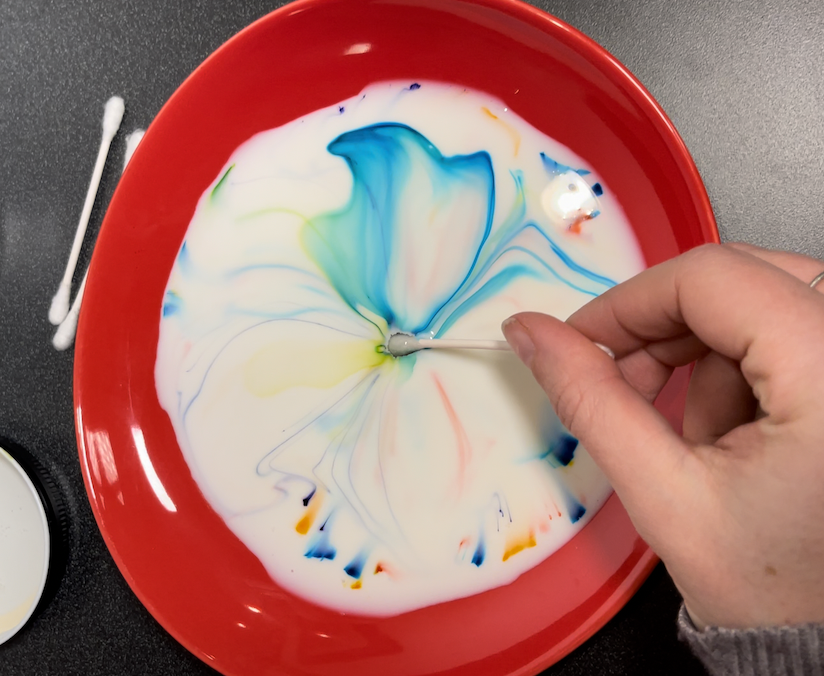How better to celebrate March and all it stands for, from St. Patty’s day to the start of Spring than with a rainbow experiment?
This experiment is a great way to teach children about chemical reactions and the properties of liquids. It also provides an opportunity to discuss the importance of clean dishes and how dish soap works to remove grease and oil. Overall, it is a fun and educational activity that can be enjoyed by all ages.
Question: What will happen to the food dye when you touch the milk with soap?
Hypothesis: If I touch the food colored milk with soap then…
*Make sure to ask your #younginventor his hypothesis before moving onto the next step.
Materials:
-
-
- Milk (whole or 2%)
- Food Coloring
- Dish Soap
- Shallow Dish or Bowl
- Q-tip
-
Procedure:
-
- Pour milk into a shallow dish until it covers the bottom
- Add a few drops of food coloring into the milk
- Dip the Q-Tip into the soap
- Dunk the Q-Tip into the milk and see what happens!
Let’s make some conclusions! Ask your child:
-
-
- Is this what you expected to happen?
- Was your hypothesis correct?
- Does anything change when you add more soap? What changes if you try different kinds of milk?
-
What Is Happening?
Soap molecules are made up of a hydrophilic part that attracts water and a hydrophobic part that repels water. Polar water molecules can dissolve other polar molecules but cannot dissolve nonpolar molecules like fat and oil. Milk is a complex mixture of water, fat, vitamins, and minerals. When soap is added to milk, it works by breaking up the nonpolar fat molecules with its hydrophobic end and connecting the polar water molecules with its hydrophilic end. The soap allows the nonpolar fat molecules to be carried by the polar water molecules, effectively separating the water and fat in the milk.
The addition of soap to milk causes the fat and water to mix, and as the soap molecules attach to the fat molecules, the food coloring molecules get pushed around, creating a colorful explosion. This phenomenon slows down as the majority of soap molecules attach to the fat molecules and the soap spreads throughout the milk. However, if more soap is added and there are still unattached fat molecules, the color explosion will begin again.

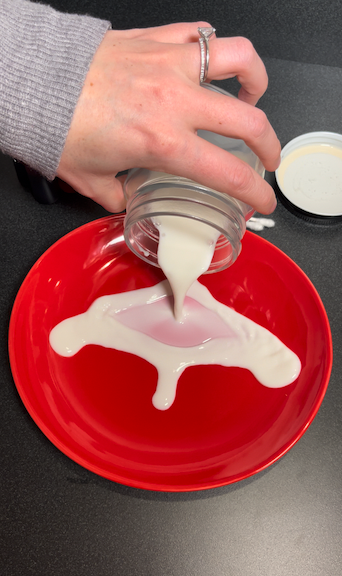
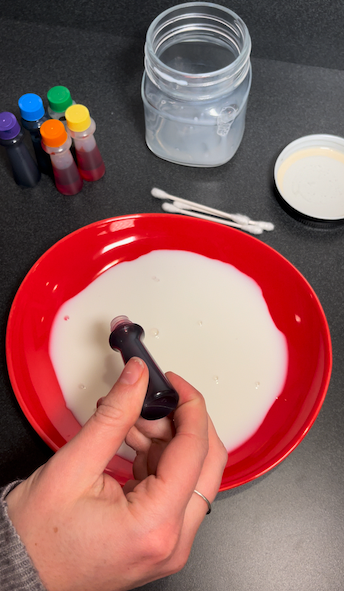
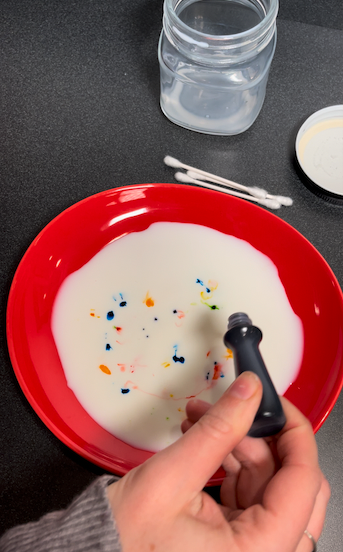
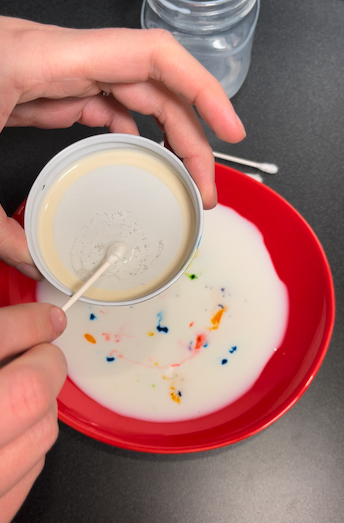
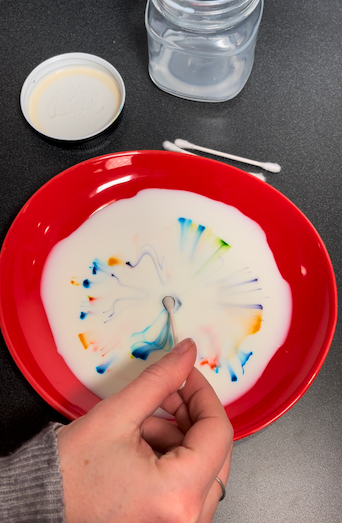
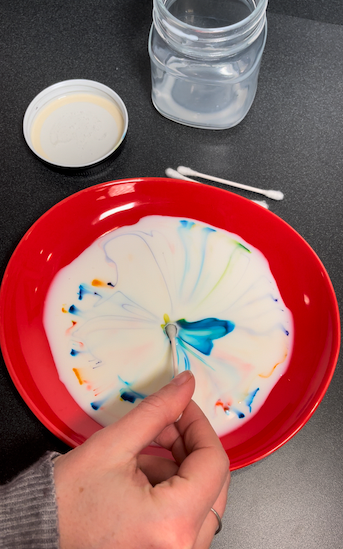
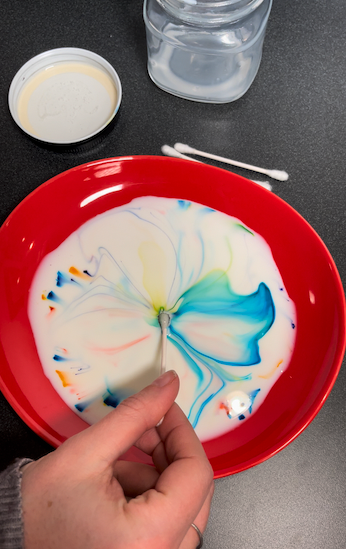
Did you know we have a club designed for children ages 4-12 so they can learn the importance of inventions from an early age? As a member of the club, you and your children will learn all about inventions while completing fun, easy STEAM activities. We hope to spark the creativity of every #younginventor!

